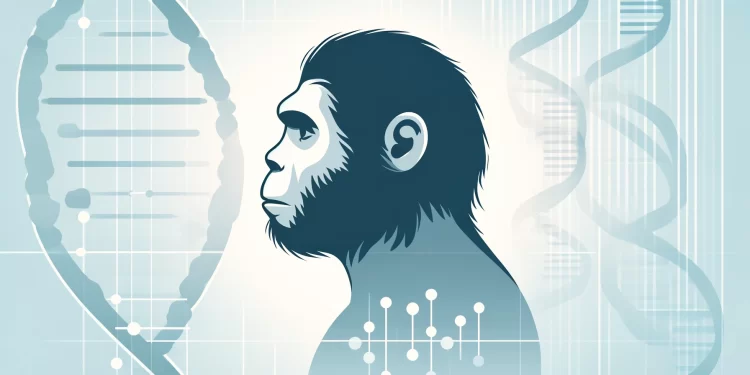In an unexpected turn of events, recent DNA sequencing has provided profound insights into the life of one of the last known Neanderthals. The discovery of this ancient human relative, affectionately named Thorin after a character in J.R.R. Tolkien’s The Hobbit, has stirred significant debate in the field of anthropology, offering new perspectives on Neanderthal extinction and human history.
In 2015, paleoanthropologist Ludovic Slimak and his team unearthed an extraordinary find while excavating Grotte Mandrin, a cave nestled in the Rhône Valley of France. The project, which had been ongoing since 1998, finally yielded a major discovery: a fragment of a Neanderthal jaw. Over the following years, Slimak and his team continued to uncover more remains, eventually assembling enough evidence to piece together the life of this ancient individual. According to Slimak, this particular Neanderthal lived approximately 42,000 years ago, just before Neanderthals disappeared from the planet. “Each year we find one tooth or one fragment of bone,” Slimak remarked in a past interview with New Statesman.
The Naming of Thorin
Given the significance of the find, Slimak named the Neanderthal Thorin, inspired by Tolkien’s Thorin Oakenshield, the last of the dwarven kings in The Hobbit. As Slimak explained in an interview with IFLScience, “Thorin the Neanderthal is also an end of a lineage, a final representative of a way to be human.”
The symbolic naming highlights the importance of Thorin’s position in the Neanderthal lineage—a relic from a species on the brink of extinction, existing in isolation while Homo sapiens thrived elsewhere. Slimak’s suspicions about Thorin’s unique status were recently confirmed through a detailed analysis of the specimen’s genome, published in Cell Genomics. The study revealed that Thorin’s population remained genetically isolated for an astonishing 50,000 years. Despite the proximity of other Neanderthal groups, there was no genetic exchange between them.
One of the most striking findings from the genome analysis was the high level of genetic homozygosity, a telltale sign of inbreeding. This isolation from other Neanderthal populations and a lack of interbreeding with Homo sapiens point to a distinct and isolated lineage.
Revisiting Neanderthal Extinction
This discovery has led Slimak and his colleagues to reconsider some long-held beliefs about the extinction of the Neanderthals. The revelation that populations as close as two weeks’ walk from each other did not interact or share genetic material suggests that Neanderthal extinction was far more complex than previously thought. Slimak suggests that this newfound knowledge could fundamentally alter how we view the disappearance of Neanderthals. “Everything must be rewritten,” he asserts. This includes rethinking how isolated populations survived for millennia and why Homo sapiens ultimately became the dominant species.
Thorin’s genetic isolation opens up many questions about how Neanderthal populations survived in such small, fragmented groups, cut off from the broader gene pool. Were there environmental barriers, social divisions, or other factors that prevented interbreeding? And what does this tell us about the evolutionary pressures that shaped the development of modern humans? This discovery serves as a stark reminder of how much we still have to learn about our ancient relatives and their place in the human evolutionary tree. Thorin’s story is not just the tale of a single Neanderthal but part of the broader narrative of what it means to be human—and how isolation and survival were intertwined in our prehistoric past.
As we continue to uncover the mysteries of ancient human history, Thorin’s legacy may serve as a critical piece of the puzzle in understanding the complex web of interactions between Neanderthals and Homo sapiens. This groundbreaking research opens the door to further investigations into the genetic make-up of other isolated Neanderthal populations. Could other Neanderthals have existed in similar isolation? How might this affect our understanding of human migration and survival? And what lessons can we learn from these ancient populations about our own resilience in the face of global challenges today?











